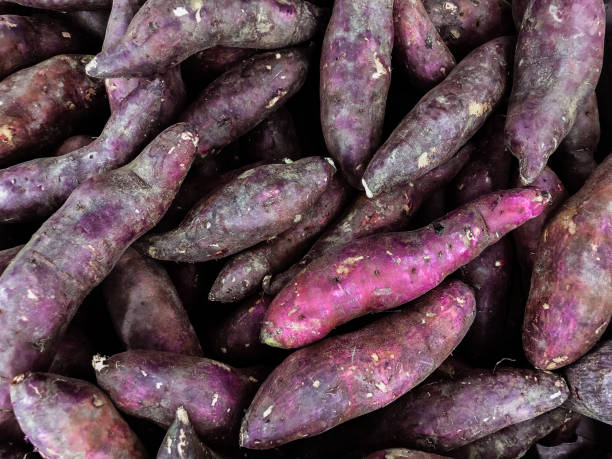Project Report For Purple Yam
Introduction
Project report for purple yam is as follows.
Purple yams and sweet potatoes are frequently mistaken. Despite the fact that they are both flowering plants, they are not botanically related. Yams are available in a range of hues. Compared to sweet potatoes, yams are drier and starchier. Yams come in hundreds of different types. Because they are widespread and farmed in tropical regions, purple yams might be more difficult to find in the US.
The skin of a yam is more like bark and does not have a variety of colours like that of a sweet potato. White, red, or purple internal flesh is all possible. These foods are a good source of vitamins and antioxidants when cooked or ground into a powder.

Purple yam, also known as ube, should be included in your diet. Include any blue, purple, or red items in your forthcoming supper. The anthocyanin content of purple yam determines its genuine potency.
Purple yams can be incorporated into your regular diet in a variety of ways. Purple yam, like other potatoes, can be cooked. For colour, bake them, use them in soups, or add them to smoothies.
Get Completely Custom Bankable Project Report
Consuming purple yams offers numerous health advantages. Bright purple to dark purple yams is available. They are an excellent source of beta-carotene, vitamin C, and protein. Purple yams are beneficial for your general health. Anthocyanins are abundant in purple yams as well.
The abundance of anthocyanins in purple yams is one of its many health advantages. They are water-soluble pigments with a purple hue. Additionally, berries, grapes, and some tropical fruits contain anthocyanins. Anthocyanins are also abundant in red to purplish-blue foods such as green vegetables, cereals, roots, and tubers.
Market Potential Of Purple Yam
The market for yam products is divided into segments for North America, Latin America, Western and Eastern Europe, China, SEA and other APAC, Japan, the Middle East and Africa, and North and South America. Given that the majority of yam product suppliers, including Hearthy Foods, Nature’s Way Goods, Inc., and Herb Pharm, are situated in the region, North America is anticipated to be a sizable market for yam products.
In order to produce yam products locally, European nations like the U.K. and Germany are spending more money importing a range of yams. The rising demand for yam goods in developing nations like APEJ, Latin America, and portions of Africa is attributed to the areas’ extensive yam cultivation.
The types of yam and types of yam products can be used to segment the market for yam products. White yams, which are the most popular and commonly grown of all the yam varieties, are the source of the yam goods. Given that yellow yams have a longer vegetative phase and less dormancy than white yams, the use of yam products made from them is anticipated to rise. According to product categories, the two most popular yam items on the market are yam flour and yam chips.
